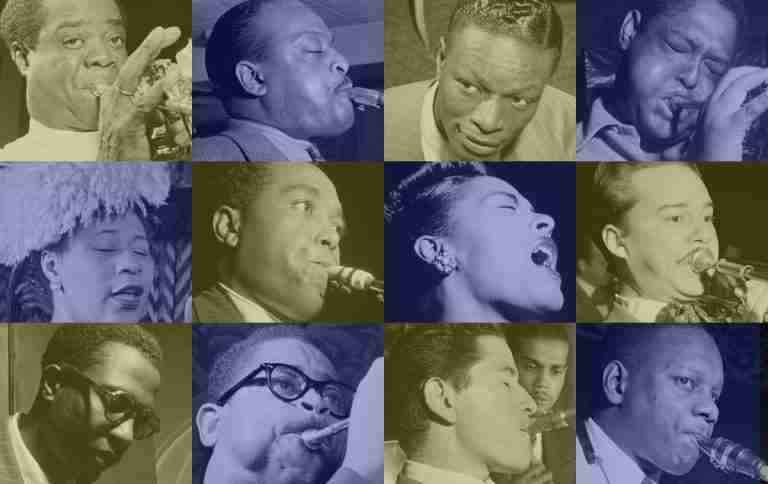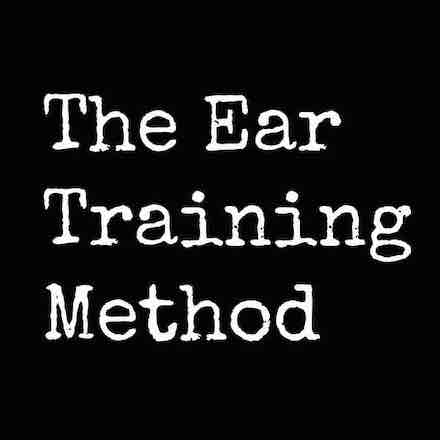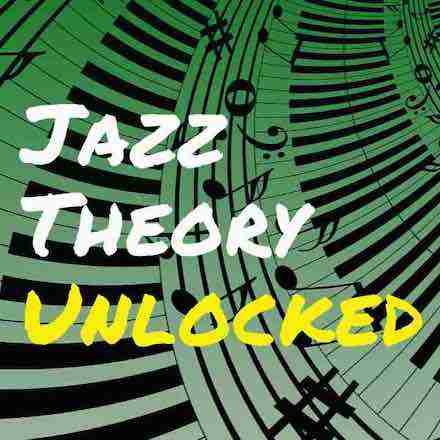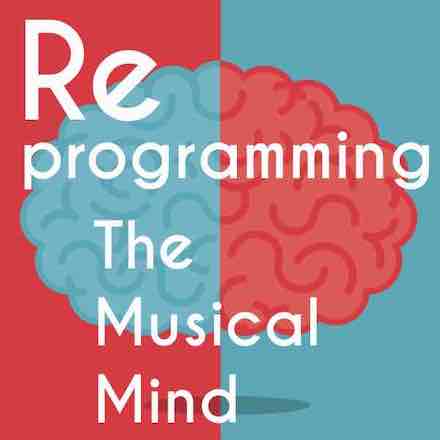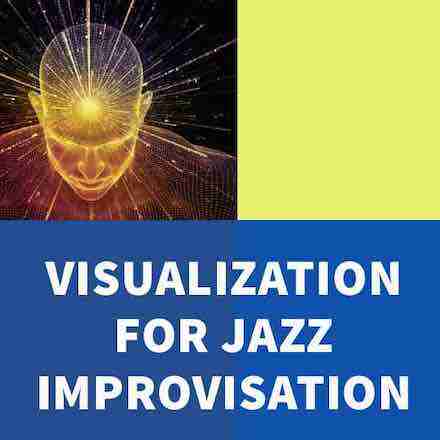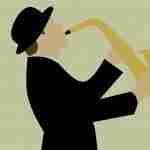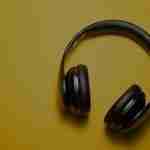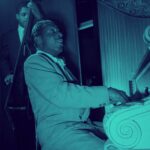So you want to learn how to improvise jazz and that’s great, but where on Earth do you start jazz improvisation?!?! There’s so much information out there that figuring out where to begin playing jazz is a complete nightmare. But I’ll tell you this right now…If I could start jazz improvisation again today, I’d do my absolute BEST to learn jazz the same way that the greats of this music learned it…
The great jazz musicians didn’t have books filled with transcribed solos of their favorite players or The Real Book packed with sheet music to any jazz standard they wanted to learn. And they certainly didn’t have play along recordings or any sort of backing tracks that they could just pop in and jam with.
Sound crazy??
These resources like the Real Book and jazz play along sets are the primary practice tools people use to learn how to play jazz today…so if the masters of this music like Charlie Parker or John Coltrane didn’t use these, what did they use?
They learned to play jazz from listening to their heroes and building upon their findings with their own musical ideas.
They thought to themselves, “That’s interesting how Lester Young does that over the dominant 7th chord on the bridge off Rhythm Changes. Now, what can I do that’s interesting?”.
Then, they furthered their jazz improvisation knowledge by practicing, playing, and performing with others.
In other words, the people you love listening to, musicians like Trane, or Bird, Oscar Peterson, or bill Evans, learned how to play jazz by studying what came before them, figuring it out for themselves, and building upon it in their own unique way.
It’s really that simple when you boil it down.
Of course the convenience of playing with a play along recording can be fun, and learning jazz standards from a fake book is much easier than trying to figure out the chords from the recording yourself, but in the long run, materials like the Real Book and play along sets will actually distract you from the pathway that will get you to where you want to go.
And that may sound a bit daunting or counterintuitive to you, but the truth is that if you get started on the right track learning jazz improvisation, you’ll make gains way faster and skip YEARS of frustration that ensue from taking the shortcuts that most jazz education materials offer today.
Now that doesn’t mean you have to avoid all jazz education resources, but be careful about depending upon them as your main go-to knowledge for learning how to improvise. Most importantly, don’t interpret anything you learn from them as a rule or a cold-hard-fact.
There are always exceptions in music and different ways of looking at the same information. There is no one correct way, just one perspective among many.
The true answers to all of your jazz improvisation questions are on the recordings of the great masters, so even if you’re just starting to learn how to improvise, make sure that your focus remains on discovering knowledge by immersing yourself in the legendary jazz recordings and remember that the answers are right there in front of you every time you’re listening to this beautiful music…
15 Steps to Practicing Jazz Improvisation: A life-long Journey of Improvement
Learning how to improvise is not an overnight process. It’s a lifetime of practice, but that doesn’t mean you can’t rapidly improve and have a ton of fun in the process!
There is a TON of information here about learning how to improvise, so take your time and don’t feel overwhelmed. Yes there are many sides to learning this music, but that’s the fun of it. The journey of learning how to improvise never ends! There’s always something new to learn or something you’ll want to learn better.
The 15 steps laid out in this lesson will guide you through the necessary parts of the life-long journey of learning how to improvise better and better, giving you an overview of how to excel quickly and consistently at jazz improvisation.
But before we dive into the details of how to practice jazz and learn how to improvise jazz like a pro, let’s back up here for a second. After all, you’re drawn to this music for a reason: the way it SOUNDS…
Step 1: Start Listening to jazz like it’s your job
- Load your phone with jazz and listen while you commute
- Throw on some jazz in the background while you work
- Dedicate focused time every day to checking out jazz musicians and jazz standards you haven’t heard before

The number one thing you can do to get started right now to learn how to improvise and constantly improve at jazz is to up your listening game. Sounds simple right?
But how much have you REALLY listened?
Now that we have phones that literally carry gigabytes of music, there’s no excuse not to be listening all the time. Invest in a high-quality set of ear-buds and listen to jazz whenever you possibly can. Subscribe to Apple Music or Spotify and have all the music you can imagine at your fingertips.
Fill your head with the stuff you like the most. When you wake up in the morning, on your way to work, while you work out, when you’re cooking dinner, when you’re cleaning up your house or doing laundry.
Listen, listen, listen, and then listen some more!!!
Start deepening your jazz improvisation listening skills with these lessons:
- Active Listening: Learn how to do it and use it – Do you ever set aside dedicated time to just listen? How much are you connecting with the music? Does it really affect you, or have you been listening to jazz passively all this time? Use the jazz advice in this lesson to learn how to listen to music actively and become aware of what’s going on. Active listening is an extremely important step in improving your musicianship.
- Listening advice you need to hear – Much of the time we listen to jazz just because we think we should listen to it and we kind of lump every recording of any jazz legend into the same bucket. But, like anything, there are great recordings and sub-par recordings. This article will talk about how to make sure you’re listening to the best of the best.
- Why listening is crucial to learning jazz standards and improvising – Practicing jazz can seem pretty complex and often when we get to the practice room, we’re overwhelmed by even where to start. Here are 3 tricks that you can put into practice before you even enter the practice room and the first one is probably the most important. It’s all about listening.
Step 2: Understand the culture of jazz Improvisation
- Learn the history of jazz and where it comes from
- Read about the lives of jazz musicians to understand what life was like and how they expressed it in their music
- Get the feeling and vibe of jazz so you don’t fall into the common trap of thinking of jazz as an intellectual art form
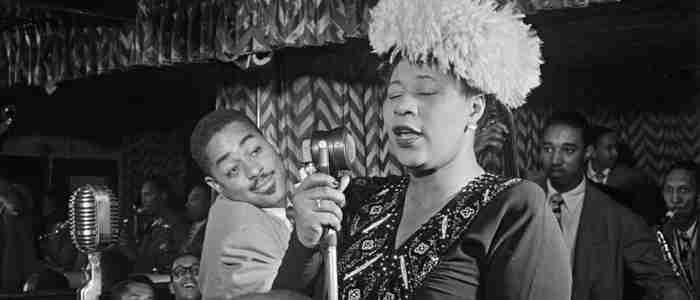
As you probably know, playing jazz requires quite a bit of knowledge. Everything from deep music theory to highly trained ears, but with all the incredible mental, visual, and aural skill needed, we often forget how DEEP this music really is.
A great way to connect with the lives of past jazz musicians and understand what life was like is to read the autobiographies or biographies of the jazz legends.
Pick one and read it to absorb the culture that these people lived in. Believe me, you’ll enjoy it. Reading about jazz musicians is always fun and entertaining, in fact, it can be down right haunting! Reading Art Pepper’s biography will give you chills…
Another great style of book to read is the making of historical albums. When you’re reading these kind of books, it’s as if you were in the recording studio watching as they put a legendary album together. There’s nothing quite like being a fly on the wall during the making of Kind of Blue.
And one final thing you’ll want to do is watch jazz interviews. Listening to how the greats thought about music, life, and practice will give you a deeper level of appreciation for jazz and get you excited and motivated to learn more.
Top Jazz Books and Lessons to learn jazz history and understand the deep jazz culture:
- Miles: The Autobiography of Miles Davis – Although many people say that Miles made up a lot of it, this book is a great read and very entertaining. Even if you take a lot of what he says with a grain of salt – Miles, we all know you didn’t write Four or Donna Lee – it’s still worth checking out.
- Straight Life: Art Pepper’s Biography – The first time I read this book, it transported me into another world. He describes every scene in his life with great detail, including his sexual exploits, intense drug addiction, and time in jail and rehab. This book is not for the lighthearted! It holds no punches, so be warned.
- Good Morning Blues: The Autobiography of Count Basie – These are a compilation of Basie’s memoirs that were transcribed from tape recordings and assembled together. It’s pretty interesting as he shares his experiences as a traveling pianist in Missouri and Oklahoma.
- I Walked With Giants: The Autobiography of Jimmy Heath – Tenor saxophonist Jimmy Heath knew many jazz giants such as Charlie Parker and played with other legends including John Coltrane, Miles Davis, and Dizzy Gillespie. In this extraordinary autobiography, the legendary Heath creates a dialogue with musicians and family members.
- Thinking in Jazz: The Infinite Art of Improvisation – This book is fascinating. I pick it up from time to time and always find something interesting. It reveals how musicians, both individually and collectively, learn to improvise. Chronicling leading musicians from their first encounters with jazz to the development of a unique improvisatory voice, he documents the lifetime of preparation that lies behind the skilled improviser’s every idea.
- ELLA: A Biography of the Legendary Ella Fitzgerald – ELLA chronicles the ultimate rags-to-riches embodiment of the American dream, whose personal life was one of the best-kept secrets in show business—until now.
- Kind Of Blue: The Making Of The Miles Davis Masterpiece – This is one of my favorite books. With transcriptions of the unedited session tapes, in-depth interviews with musicians, freshly discovered Columbia Records files, never-before-seen photographs, and a foreword by the last surviving member of the band, drummer Jimmy Cobb, Kind of Blue is a vital piece of music history
- A Love Supreme: The Story of John Coltrane’s Signature Album – Ashley Kahn tells the story of the genesis, creation, and aftermath of this classic recording. Featuring interviews with more than one hundred musicians, producers, friends, and family members, unpublished interviews with Coltrane and bassist Jimmy Garrison, and scores of never-before-seen photographs, A Love Supreme balances biography, cultural context, and musical analysis in a passionate and revealing portrait.
- 50 Jazz interviews to get you inspired – If you want to connect with the lives and culture of jazz musicians, there’s nothing like hearing them in their own words. These 50 jazz interviews will inspire you and shed a little light on the way they thought and lived.
Step 3: Understand what jazz improvisation actually is
- Bust the myth that jazz improvisation is 100% made-up on the spot
- Understand the crucial role of preparation in learning how to improvise
- Learn the difference between practicing jazz and performing jazz
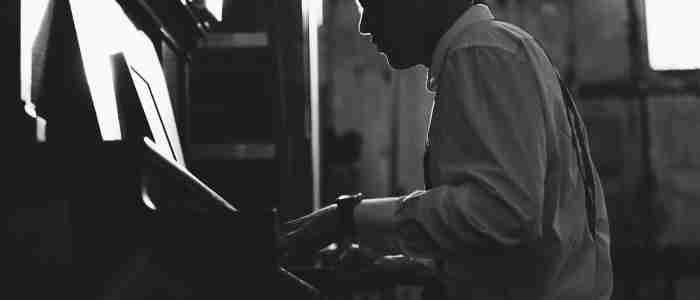
Do jazz improvisers create everything they’re playing on the spot. I mean, isn’t it completely 100% made up in the moment – that’s why it’s called improvisation, right?
Not exactly.
It is true that as an improviser you’re creating in the moment and , “seeing where things go,” but that doesn’t mean that it’s all made up on the spot…
The countless hours of preparation in the practice room give the improvisor musical tools that they can use in real-time. When they combine these tools, interact with the musicians around them, and let go, something new is born in that exact moment.
Learning how to improvise requires a balance between discovering, learning, and applying new concepts & jazz improvisation techniques, with the ability to relax and freely combine all the knowledge you have so you can “sing” new melodies through your instrument in real-time when you perform a jazz standard.
If that sounds a bit strange, that’s ok. It’s not exactly the easiest thing to understand in the process of learning to improvise. As a beginner, the best thing to do is to trust the process and have a crystal clear idea of what jazz improvisation actually is.
Top Lessons to understand what jazz improvisation actually is:
- Is Jazz improvising really improvising? – When you’re first learning how to improvise jazz, it seems completely magical, as if everything is made up right on the spot, in the moment. But behind these seemingly spontaneous moment lie a ridiculous amount of preparation…
- The Top 5 myths about playing jazz – It’s time to bust the top myths about jazz improvisation. Stop believing the hype and start realizing what’s fact and what’s fiction.
- 4 More myths about jazz improvisation – When it comes to jazz improvisation, there are plenty of myths. Check out this lesson to bust even more.
- How thinking like a composer is essential to practicing jazz improvisation – The composer’s mindset it crucial to understanding the difference between what you think jazz improvisation is and what it actually is. When you realize that there’s more composition in improvisation, and more improvisation in composition, you’re on the right track.
Step 4: Understand how to practice jazz improvisation and how the pieces of the puzzle fit together
- Learn what the various elements of practicing jazz are
- Get an idea of how everything fits together
- Realize that learning how to play jazz is a process, one that takes a long time, but is a constantly rewarding journey
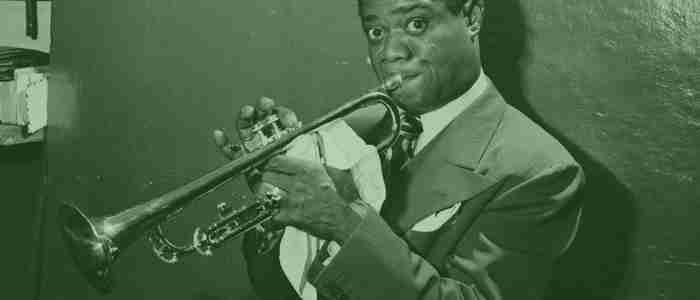
Why is practicing jazz improvisation so difficult?
One aspect of learning how to improvise that makes it so difficult is that it’s not linear. You might learn how to play over a minor 7 chord one day and then realize months later, you’ve encountered minor chords that don’t quite fit the model you have, or maybe you just get sick of how you play over minor chords and need a new approach, or perhaps you’re having trouble with certain keys of minor chords.
In learning how to improvise, there’s this constant flow of learning new material, learning old material better or completely reworking it, discovering new ways of combining ideas, or realizing there are huge gaps in your knowledge that need to be filled.
You’re always jumping around, pushing ahead to the new yet hopping backward to update, fix, and better understand the old.
Learning jazz is not linear, but the primary topics you need to tackle can fit into only a few categories. Having a conceptual idea of how all these practice categories fit together will help you understand how to practice jazz effectively and make rapid gains.
Top Lessons to understand how to practice jazz and how the pieces of practicing jazz improvisation fit together:
- What to practice for jazz improvisation: A Free presentation on the elements of playing jazz – Learning what to practice when you want to play jazz can be difficult. Use this free jazz presentation to understand exactly what to practice to get better at playing jazz and how the fundamental pieces of practicing jazz improvisation fit together.
- A Diagram on what to practice to play jazz – Having trouble getting specific in the practice room and spending your time the right way? Hang this free jazz practice diagram up in your practice room so you know what to practice and how to stay focused on what matters.
- The Practice plan for getting good fast – The jazz advice in this lesson will show you how to learn jazz fast. Stick to this plan if you’re serious about learning how to improvise quickly.
Step 5: Start learning jazz theory but be careful!!!
- Learn the 4 essential jazz chords, how they’re built, and how they function within a chord progression
- Learn the essential jazz scales and how they relate to chords
- Understand the dangers of theory, how it can cause years of frustration and derail your musical progress if used in the wrong way
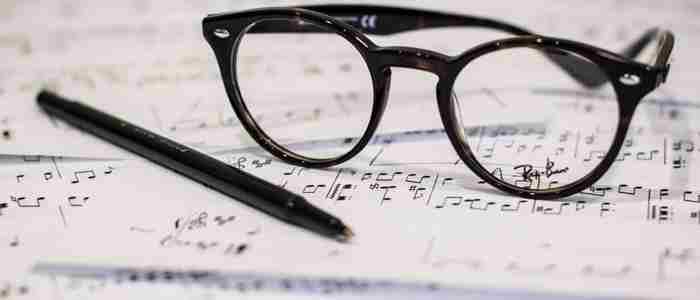
When you open most guides to learning how to improvise, jazz scales and music theory almost always lead the way…
But this is a huge mistake!
Is jazz theory important? Of course! But it’s just ONE tool of many.
Definitely get started learning the basics of jazz theory, but know that the theory you learn is only one perspective on how to think about music. Despite what any book tells you, there’s no single RIGHT way to analyze or think about music. In fact, much of the creative music that you love is born from violating theoretical rules.
It’s called theory for a reason! Because theory is supposed to follow practice…
Use theory to support what you hear. If something is theoretically correct but doesn’t sound right, then it’s not. Keep working at it until it sounds good to you.
Jazz improvisation is NOT music theory and rules!
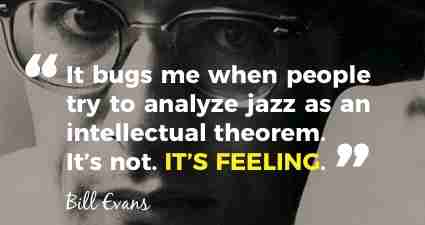
To begin playing jazz, there’s not that much music theory you need to understand. One of the primary things to focus on is learning and becoming comfortable with jazz chords and the 4 basic chord types:
- The Definitive Guide to Jazz Chords – In this lesson you’ll get an overview of all the essential jazz chords. You’ll learn their structures, sounds, chord voicings and more…
- Major 7 Chords – They seem easy, but playing something meaningful over them can actually be quite challenging
- Minor 7 Chords – They can be approached differently depending upon the way they function within the key center
- Dominant 7 Chords – These are tricky for people because they have so much variation depending on which notes are altered within the chord voicing
- Half Diminished Chords (also known as minor 7 b5 chords) – They seem to present difficulty for nearly everyone because of there slightly foreign construction
Once you have a solid grasp on the 4 chord types, start to understand how the Chord Scale System relates scales to each chord and how you can use scales to understand how chords function within a key, how to approach a chord in a linear fashion instead of a vertical fashion, and how to easily access the upper structures of a chord, the 9th, 11th, 13th, but be careful thinking that scales are the secret to playing jazz.
Scales and theory can help a ton to conceptualize information in jazz, but remember, scales are just ONE tool in your toolbox.
Without the important tools that we’re about to cover – visualization, ear training, and jazz language – scales and theory will cause you years of frustration and you’ll constantly wonder why things still don’t sound the way you want them to.
A good rule of thumb: for any music theory study you do, make sure to spend an equal amount of time or more with famous jazz recordings transcribing, learning jazz language and chord changes. This guideline will ensure that your mental approach to music is balanced out with the actual sounds of jazz that you want to familiarize yourself with.
Top Lessons to learn the basics of jazz theory and what to watch out for:
- Why scales are NOT the secret shortcut to learn how to play jazz – Scales are touted as the be-all-end-all in jazz education today. While they play an essential role in learning how to improvise, jazz scales are only one piece of the puzzle. They are not the secret shortcut that will make you a better improviser. Learn why now and save yourself from falling for this trap.
- Get to know the Chord-Scale System: Benefits & Limitations – Expanding upon the limitations of thinking strictly in terms of scales, this lesson will help you understand how to get the most out the Chord Scale System without letting it put you into a musical straight jacket. Learn to get the benefits of this system without being held back by its limitations.
- Understand the 3 different minor chords in a major key – Minor chords are actually more difficult for people than they even know because of the way they can function within a chord progression. Use this lesson to finally clear up the confusion behind how a minor 7 chord functions and how to simplify how you conceptualize these chords.
- How to turn music theory into real music – Music theory is not music. But it does give you tools and guidelines for how to think about and classify elements of music. Given the right perspective you can learn to harness the power of music theory and transform it into real music.
- Learn the subtleties of dominant 7 chord alterations – Altered dominant chords present quite the challenge to the beginning and intermediate improviser because they lack an understanding of the relationships within the structure of these chords. Use these visual references on alterations to dominant seventh chords to solidify how you think about these colorful chord tensions.
- The Jazz Theory Unlocked Course – If you want to understand the WHY behind every chord in a tune, stop relying on scales for your theory understanding, and grow your harmonic understanding fast, then this course is for you.
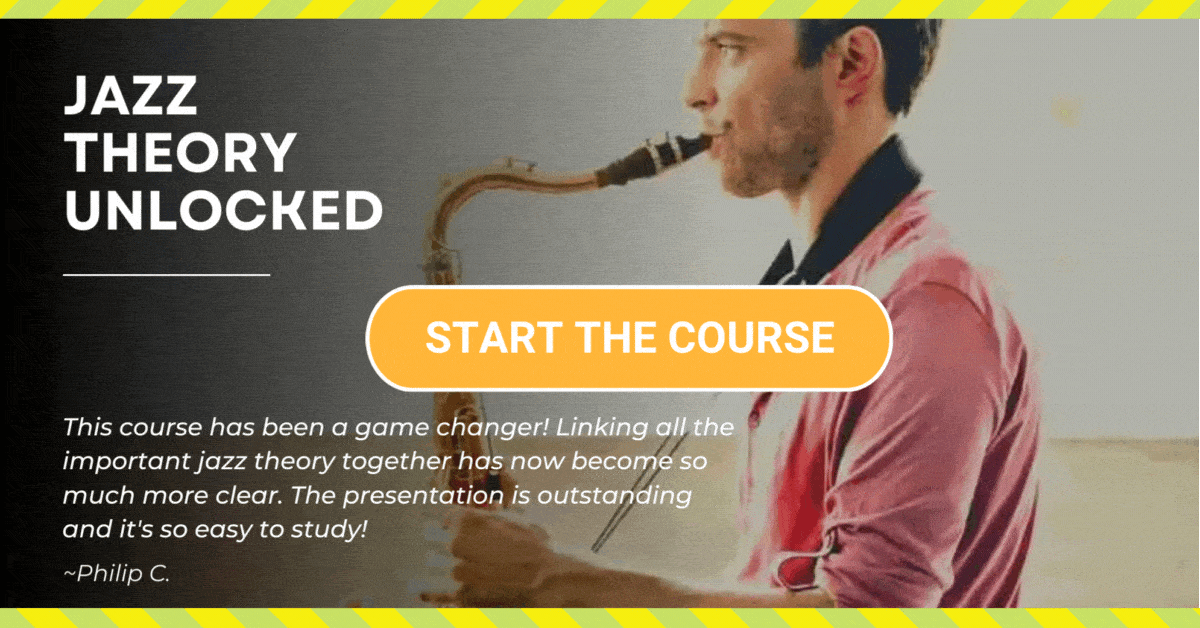
Step 6: Use Visualization to Get a practical and usable knowledge of music theory, jazz chords and jazz scales
- Learn why visualization is the KEY to mastering music theory
- Learn the basics of how to visualize any jazz chord, scale, or progression to any jazz standard
- Understand the fundamental difference between knowing something intellectually VERSUS possessing a real-time practical and usable knowledge of it
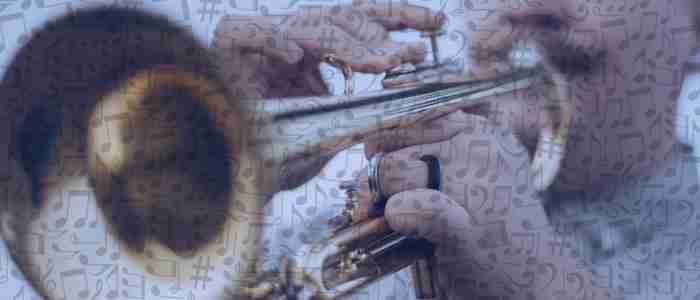
After reading through the last step on theory and scales, you might realize why music theory can actually be a trap…
You see, it can allow you to understand what’s going on intellectually within a jazz standard or a chord progression without being able to access any of the information in a usable way.
In other words, you might be able to understand conceptually what’s going on and explain it, but not be able to use the knowledge in real-time, the one essential thing you have to be able to do to actually use it when you improvise.
For example, you want to be able to quickly, immediately, and intuitively know what any chord tone of any chord is with ZERO thought or effort. What’s the third of an Ab major chord? The #9 of Eb7? Or how about the #5 of Gb7?
If you have to think about these questions even for a split-second, then the theory is useless. And this is only one small example of how you need to transform your understanding of theory into a usable workable REAL-TIME knowledge.
The key to start ingraining the structures of chords, chord progressions, chord tones and jazz scales into your mind in a useable way that you can access instantaneously is through the process of visualization.
Your goal is to get beyond music theory and develop a relationship with each chord and all its parts and contexts – A Mental, physical, and aural relationship.
Visualization gives you the mental aspect and greatly enhances the physical aspect of playing your instrument. The aural aspect we will get to later with jazz ear training, but before you get there it’s time to get your mental connections flowing by starting to visualize jazz theory…
You can start doing all these jazz visualization exercises right now even without your instrument and transform your theoretical knowledge into something you can actually use while you improvise…
Top Lessons on visualizing jazz and music theory:
- Basic visualization techniques for music – Learn the basics of visualizing music with one of our first free jazz lessons ever. This powerful technique is a must for learning music fast.
- How to put chord tones at your fingertips – Chord tones are a large part of the musicians toolbox and they need to be accessible with zero effort. This ease of access comes through focused visualization. Learn the step-by-step process to put chord tones at your fingertips.
- 5 Ways to practice anywhere – Practicing jazz is not limited to the practice room. Imagine commuting on the subway, or flying in a plane while you’re improving your musicianship. This is possible with these 5 techniques.
- The Jazz Visualization Course – After years of developing visualization tactics, techniques, and exercises for music, we created this step-by-step course to master the fundamentals of jazz visualization. This best-selling course includes visualization techniques for jazz chord symbols, chord tones, scales, chord progressions, language, jazz standards, and more! With 179 pages and 98 audio exercises, this course is your pathway to mastering this essential skill which will allow you to learn ANYTHING in music 10X faster!
Step 7: Learn basic Jazz Piano. It’s easier than you think
- Learn basic piano skills
- Learn essential easy jazz chord piano voicings
- Learn how to apply this chord and voicing knowledge to a jazz standard

For all the non-pianists out there, learning how to play basic jazz piano is like having an unfair advantage…
Suddenly chords, chord progressions, scales and jazz theory make a whole lot more sense because you can see all the relationships in front of you. And what’s even more important, you can HEAR them!
If you haven’t already, invest in a midi keyboard. Even a little guy like the Akai LPK25 works great for your purposes. You’re not trying to be the next Bach! All you want is to be able to play basic chord voicings, root movements, and use the keyboard to help confirm and figure out what you’re hearing on recordings.
I take the Akai LPK25 everywhere. Pair it with a good set of headphones and the knowledge in the lessons below, and you’re well on your way to gaining the unfair advantages that piano players take for granted…
Top Lessons to learn jazz piano:
- Basic jazz piano skills for the non-pianist – Have you ever wished that you could play basic jazz piano? The only problem is that you’re not a pianist…well, that’s not an excuse anymore. In this lesson you’ll quickly learn how to voice chords and play ii Vs, the essentials you need to start playing jazz piano today.
- How to learn jazz standards at the piano – With your new found piano skills, put them to use and start to learn jazz standards at the piano. Discovering the chord changes for yourself and playing the chords will give you a much deeper understanding of any jazz standard than you’ve ever had before.
- The Jazz Piano Book – Want to take you jazz piano skills to the next level? This book by pianist Mark Levine will hold your hand through the fundamentals.
Step 8: Get started with jazz Ear Training
- Learn to hear intervals, triads, and seventh chords
- Understand how to translate your ear training skills into your jazz practice
- Learn how to connect your ears to your instrument
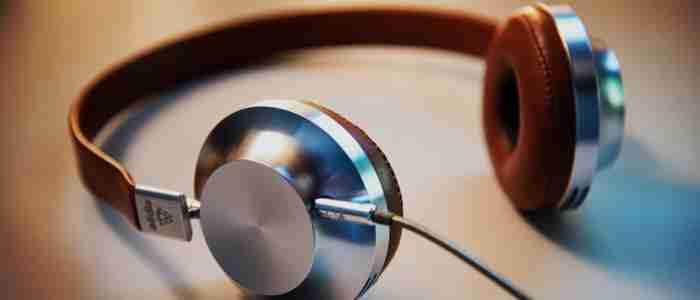
Getting started with jazz ear training is really easy, especially if you took the advice in the last step and started learning basic jazz piano and grabbed a midi keyboard to practice with. I carry this little keyboard LINK everywhere I go which is great for ear training, composition, and more!
To begin training your ear like a jazz musician, you need to understand that simple recall doesn’t cut it for us. We need ears that can operate in real-time and pick out melody, harmony, and rhythm on-the-fly.
To achieve this takes time and practice, but with a consistent effort, you can get the ears you want. It all starts with the basics…
For the most part, everything you need to hear in any music is built upon simple structures. Ingrain these simple structures and you’ll be ready when it’s time to kick things up a notch to hear more complex sounds like intricate chord voicings or alterations on dominant 7 chords.
Jazz ear training is something you can practice away from your instrument throughout your day on-the-go as long as you have the right tools…which is why we built The Ear Training Method, an ear training course that you can take with you anywhere.
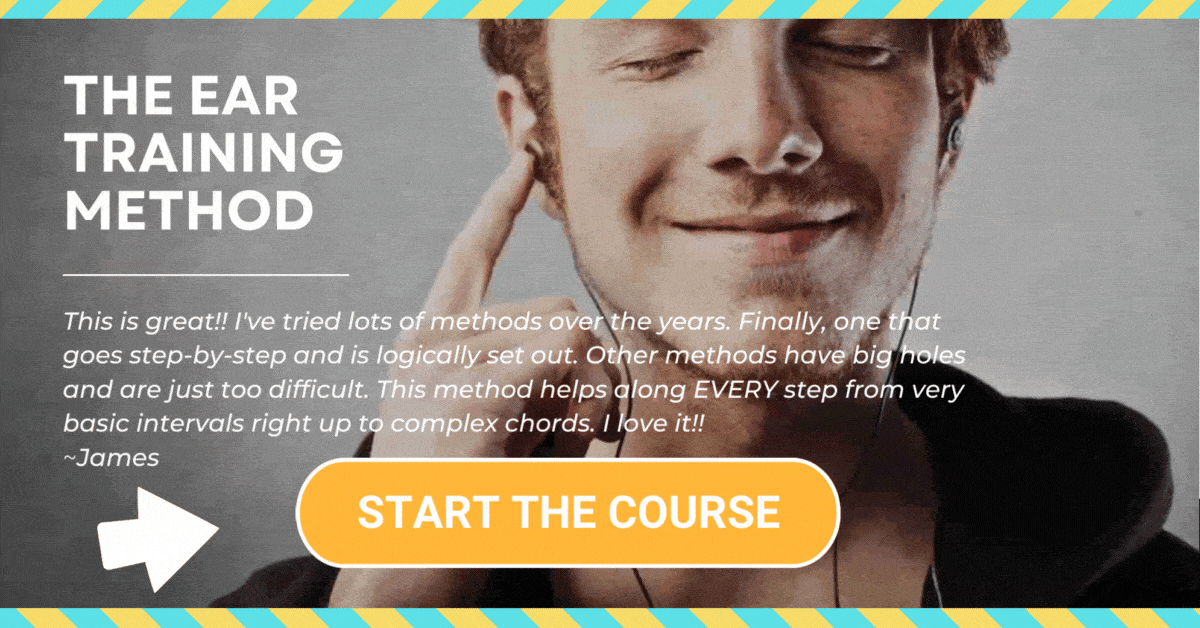
Imagine training your ear as you commute to work, or go to the gym. All of this is possible and more with this fundamental course.
Don’t make the common mistake of neglecting jazz ear training. Without it, you’ll always feel like you’re in the dark. Get started today with the lessons below…
Top Lessons to learn jazz ear training:
- Fundamental jazz ear training exercises – New to jazz ear training? Use the ear training exercises provided in this lesson to start your journey down this necessary road.
- Jazz ear training: How to hear triads – Think you know your four triads? Can you hear them in all contexts without any effort? It’s actually not as easy as you might think.
- Ear training: How to hear jazz seventh chords – After building strong foundations on triads, move on to getting your head around seventh chords.
- How to hear chord tone colors – The ability to hear how each chord tone sounds against any given chord is a crucial skill for the jazz improviser. It’s as if you’re learning to hear the subtle colors of chord tones.
- The Ear Training Method: A course to get the ears you’ve always imagined – While all these free jazz lessons on ear training will get you started on your jazz ear training journey, this premium course is an in-dpeth resource that musicians can take on-the-go to train their ears any time, any where. What started out as our personal ear training system grew into a comprehensive program on building your ear from the ground up. It starts out by strengthening your fundamentals, relearning intervals and basic chord structures, and gradually progresses all the way to chord-tone colors and chord voicings. If you’re serious about training your ear, you owe it to yourself to start putting get time in with this method.
Step 9: Master Two Five Ones and other common chord progressions
- Discover the most common chord progressions that make up over 80% of every progression in jazz standards
- Learn practice exercises that you can use to master common jazz chord progressions
- Understand how to learn tunes faster than ever before by utilizing this information about common jazz chords progressions

The more you learn about how to improvise jazz, the more you’ll encounter the same chord progressions over and over again…
And when you realize that the ii V I chord progression makes up over 80% of chord changes within jazz standards, you better believe it’s worth spending some time becoming a master of these common chords.
But ii V I chord progressions are just one of several chord progressions that come up all the time in jazz standards. Knowing what all these common chord progressions are and having tactics for approaching them will give you the improvisational tools to learn jazz standards faster, retain them more easily, and solo more creatively.
Top Lessons to learn jazz chord progressions:
- How to visualize jazz chord progression – When you combine jazz visualization with the most common chord progressions in jazz, you get a some powerful mental jazz exercises. Take these ideas anywhere you go to start implanting the common jazz chord progressions into your mind, body, and soul.
- Two Five One Progressions made easy – ii V I progressions are at the heart of learning how to play jazz. With the right approach, two fives are actually pretty easy.
- Minor Two Five One Progressions made easy – A jazz chord progression that’s always given people a tough time is the minor ii V. The notorious cousin of the major ii V, the minor ii V poses a few extra challenges. In this free jazz lesson, techniques from Bill Evans illustrate how you can easily navigate this tricky jazz chord progression.
- Understanding turnaround chord progressions in jazz (Premium) – This premium jazz lesson goes into detail about the many kinds of jazz turnaround progressions. For premium subscribers, you’ll get a look into the inner workings of tritone substitution, Lady Bird Turnarounds, how Kenny Dorham and Joe Henderson approach turnarounds and more!
Step 10: Get started with Jazz Improvisation on Blues & I Got Rhythm Changes
- Learn why The Blues is so fundamental to playing jazz
- Learn why the chord changes to Gershwin’s I Got Rhythm play a major role in learning how to improvise
- Learn to practice methods to approach Blues and Rhythm Changes
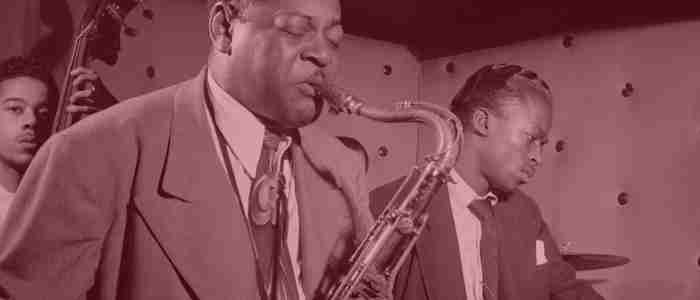
You probably hear it all the time..Learn The Blues and Rhythm Changes.
But why is this advice so common? Are these jazz chord progressions really that essential? What makes them so special?
The Blues form along with Rhythm Changes contain pretty much all the common jazz chords that you’ll encounter playing this music:
- Major 7 chords
- Dominant 7 chords
- Minor 7 chords
- Half Diminished chords (AKA minor 7 b5 chords)
- Diminished 7 chords
And they contain the most common jazz chord progressions:
- Short one measure ii V progressions
- Longer two measure ii V chord progression
- Strings of iii Vi ii V chord progressions
- Dominant 7 chords progressing in Cycle Movement
And really, that’s just scratching the surface! The way you think about these jazz chord progressions is virtually limitless and the skills you develop when practicing them translate to every jazz standard you will ever learn.
Do yourself a favor and continue to work on both The Blues and Rhythm Changes as you continue to grow as a jazz improviser. Each time you revisit them is a chance to expand your knowledge and improvisational concept.
Top Lessons to learn how to improvise jazz on Blues chord changes & I Got Rhythm Changes:
- Learn How To Play The Blues from Wynton Kelly – Use these detailed jazz techniques from pianist Wynton Kelly to understand fundamental concepts on the blues.
- How to play the blues in all keys (Premium) – For premium subscribers, take your blues playing to the next level by learning the process to approach blues in all keys.
- How to play Rhythm Changes like John Coltrane – Master saxophonist John Coltrane had a unique way of playing over Gershwin’s I Got Rhythm changes. Check out this lesson to peer into the inner workings of how Trane soloed over these essential jazz chord changes.
- 6 Perfect jazz solos on Rhythm Changes (Premium) – Want to improve your Rhythm Changes playing? Join premium to access this lesson with 6 perfect transcribed solos over Rhythm Changes, illustrating everything that makes these solos great!
Step 11: Learn How to Improvise on your first jazz standard
- Understand why learning jazz standards from The Real Book can ultimately cause huge gaps in your learning
- Acquire the process to learn jazz standards from recordings
- Start building your jazz standard repertoire
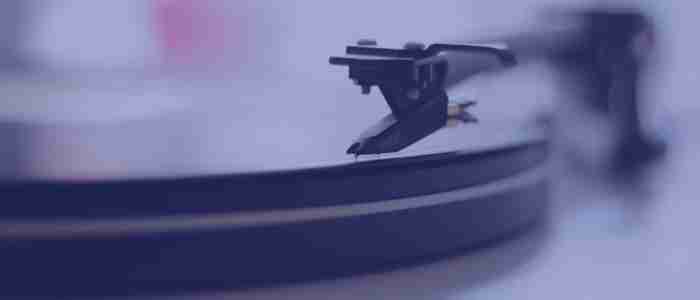
Learning jazz standards is what jazz improvisation is all about, after all, when you perform for an audience you’re not going to play a dominant chord or a ii V, you’re going to perform an actual song!
Every single song that you love that’s part of the jazz standard repertoire is yet another vehicle for you to practice all your
In all your listening that you’re now doing, you’re bound to come across a jazz standard that resonates with you on a deep level. To learn your first jazz standard, find a recording that you love preferably where the melody is played by your instrument.
Here are some great jazz standards to start out with:
- Autumn Leaves
- On Green Dolphin Street
- Blue Bossa
- Four
Your goal is to learn the melody and the chord changes directly from the recording. And at first, this is quite a challenge!
Of course it’s tempting to just open The Real Book and learn a tune from sheet music, but know that every time you do this, you’re learning a tune in a way that will have difficulty sticking with you. You see, when you struggle and spend time with the recording of a tune, you are using your ears, mind, and instrument to discover the melody and chord changes.
This process creates a vivid memory, allowing you to retain the tune with minimal effort.
In contrast, learning from sheet music does not engage your ear, and instead uses your eyes. This process, especially when you’re first starting out, creates a weak memory of the tune, forcing you to review and essentially re-learn the tune at a later time.
It is challenging, but if you put in the effort now, it will pay huge dividends later…
A tool that we use every single day to make this process of learning jazz standards easier and more beneficial is called “Transcribe“. With it, you can navigate any track much easier, sloop sections you want to work on, and slow down anything that you’re having trouble hearing. It’s essential to getting the absolute most from your practice.
The sooner you get into learning melodies, harmonies, and rhythms straight from the recording, the faster you’ll get to playing how you want to, and while everybody else you know is stumbling over the chord changes and confused over what scale choice to make, you’ll actually be hearing and playing the language of jazz.
Use the lessons below to get this process going and to start learning jazz standards straight from recordings…
Top Lessons to learn Jazz Standards:
- Why you shouldn’t be a real book player – The Real Book has become the way that jazz musicians learn jazz standards. In this article, realize why using the Real Book is not exactly the best idea…
- A Free jazz lesson guide on how to learn chords and melodies from recordings – Download this free jazz PDF lesson to learn the essential skill of learning jazz standards directly from recordings.
- Learn the jazz standard It Could Happen To You – So you want to learn jazz standards but need a great example. The process outlined in this lesson will lead you step-by-step.
- Charlie Parker’s secrets to the jazz standard Confirmation – This tune is notoriously tricky. Here are Charlie Parker’s tricks to it, along with a process of thinking about how you might tackle other jazz standards.
- What to do when you crash and burn on a tune – It happens to everyone. At some point, you’ll catch an burn on a tune. Check out this lesson to get you back on the right track.
Step 12: Start transcribing and thinking about jazz language, the secret to jazz improvisation
- Learn why transcribing is essential and what it actually is
- Understand the process of transcribing jazz solos and language
- Understand what jazz language is and why it’s so important
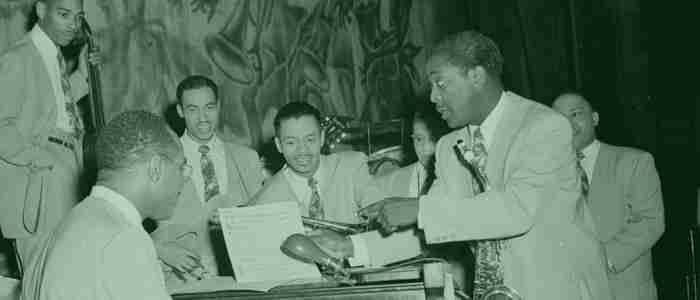
I remember years ago when I first heard some of my favorite players talk about jazz as a language. It made no sense to me…
How could jazz be a language?
If jazz is a language, does it have a dictionary? Does it have grammar? Does it have punctuation?
The answer to this question is not exactly straightforward…
The idea that jazz is a language is an analogy. Of course it’s not 100% like a language in the sense that English is a language, but there is tremendous overlap. So much so that it not only makes sense to think of jazz as a language, but it helps you learn faster as well.
When you study how to play jazz, picking apart pieces of jazz language from your favorite players help you understand how they construct such beautiful melodic phrases and how you can too.
Learning jazz language is largely the key to improvising because it connects harmony, melody, rhythm, sound, articulation, and more, within the context of jazz standard. You couldn’t ask for a better learning tool or model of how to improvise over any chord progression.
But before you start acquiring jazz language for all the jazz chords and chord progressions, simply start to think of jazz as a language and how extracting pieces of language from your favorite jazz musicians gives you solutions to all your musical problems.
Top Lessons to start thinking about jazz language and why it’s so important in jazz improvisation:
- The Reason you need to start thinking about jazz language right now – You might not have heard of the concept of jazz language before, or even understand why it’s that important in the first place. Read through this lesson to understand why you need to start thinking about jazz language right now if you want to play jazz better.
- 3 Things you need to know about when transcribing jazz solos – Transcribing jazz solos seems pretty straightforward, but there’s a lot of subtly to the process. Here are 3 things you gotta know about transcribing.
- Applying jazz language versus jazz scales – When we first learn to improvise, we generally think in terms of applying scales, bu the real power comes in when we understand how to apply jazz language.
- What transcribing jazz solos actually is versus what people think it is – What does it actually mean to transcribe jazz solos? Does it mean writing them down or learning them by ear? Does the process matter? Find out in this revealing jazz lesson.
- 10 Killer tips for transcribing jazz solos and language – Use these 10 tips to transcribe solos and jazz language more effectively and get more out of the process.
Step 13: Start acquiring jazz language & melodic techniques and applying them to the tunes you’re working on
- Start learning jazz language for the fundamental jazz chord
- Understand how to use the underlying concepts from jazz language while you solo
- Learn the process of integrating jazz language into your playing
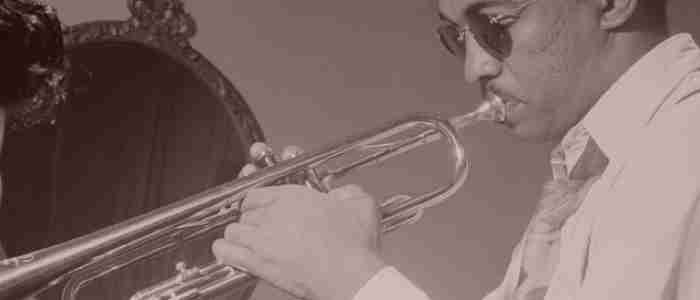
So where do you want to start learning jazz language? Should you transcribe a whole solo? One single line? Who should I transcribe? What instrument should I start with? What tune?
All of these are good questions and when you’re first starting to learn jazz language and expand your jazz vocabulary, it can be very difficult to know where to begin.
The best place to begin getting jazz language is from a recording you love – something you listen to every single day. Something that you really connect with. And it’s easiest at first to learn language from solos of your instrument. This doesn’t mean you can’t study solos that aren’t you’re instrument, but to to begin with, make it easy on yourself, and focus on solos of your instrument.
Once you find a recording that you love, go even deeper. Find a solo you love over a progression that you’re familiar with. And then, go one step beyond – fins a specific melodic line that the soloist plays that makes your jaw drop!
That specific line that sounds so incredible to you is your starting point to learn jazz language.
Learning the line note-for-note, writing nothing down as you go will be super challenging and probably pretty frustrating at first, but if you stick with it, you’ll get it.
Imitate the music as closely as you possibly can. Absorb every little detail you hear, get beyond the notes.
The idea is to get into the musician’s head as much as possible. Emulate them as if you were them. Only then will you truly discover where the magic of the line lies.
Once you get your first glimpse into how powerful learning jazz language can be, you’ll be hooked, but before you go crazy learning jazz language, use the following lessons to systematize how you go about it, making sure you’re learning language for all the common chord progressions and various soloing situations you’ll encounter in jazz and even other musical styles.
Top Lessons to acquire jazz language and use it in your solos:
- How to integrate jazz language into your solos – Learning jazz language is only half the battle. The other half is getting the material you practice to actually come out when you take a solo. The jazz exercises explained in this lesson will teach you how to get the stuff to actual rise to the surface when you improvise.
- How to steal jazz language like a pro – Professional jazz musicians have a lot of tricks up their leave when it comes to stealing jazz language, licks, and lines from their heroes. Read about these tricks and start using them when you transcribe.
- How to get jazz language for the common jazz chords – Building an arsenal of jazz language for the common jazz chords will help every aspect of your musicianship.
- A Step-by-Step Guide to mastering the jazz language (Premium) – There’s a lot to think about when acquiring jazz language. For premium members, use this guide to master the jazz language step-by-step.
- Melodic Power: The Course to get melodic techniques fast – When you’re learning how to improvise, it’s difficult to go from playing scales and transcribing to actually playing in a melodic way. You know when you hear your heroes and they’re playing as if they’re singing through their instrument? That lyrical quality is attainable through a systematic approach to improvising. In Melodic Power, we detail dozens of powerful jazz techniques in 42 PACKED lessons, with a 207 page eBook, tons of transcribed lines by the jazz legends, and over 5 hours of video demos!
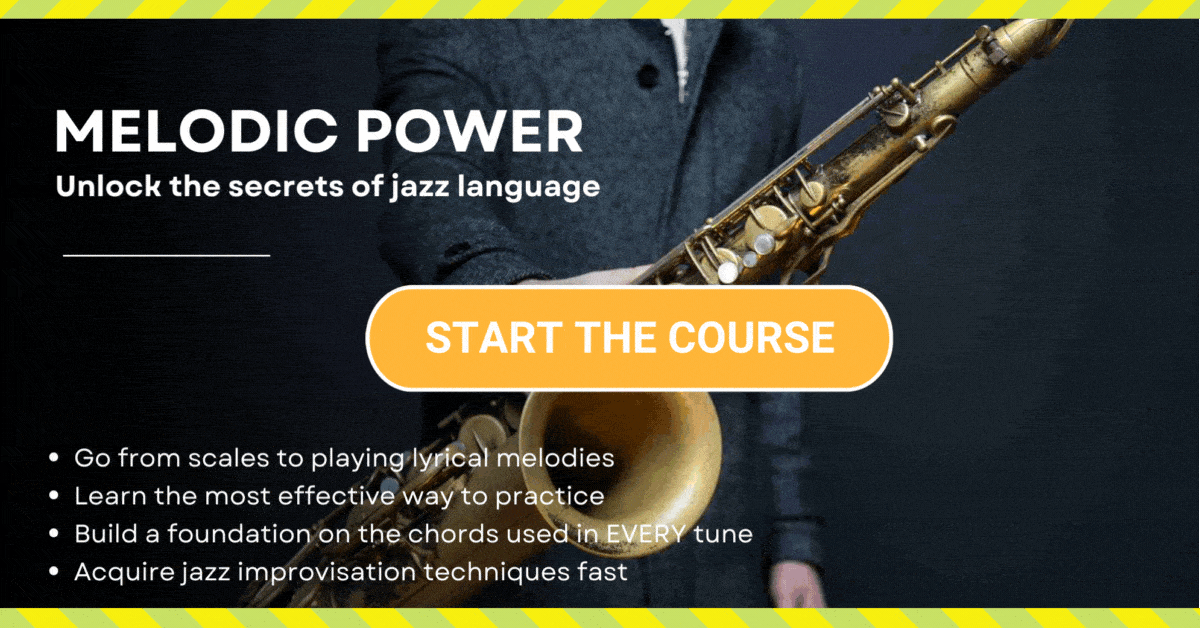
Step 14: Develop solid life-long practice habits to learn how to improvise jazz like a pro
- Create a practice routine for yourself that is both beneficial and realistic
- Understand how to manage your time and to not feel overwhelmed or in a hurry
- Learn to be your own teacher, transforming yourself into the musician you wish to become
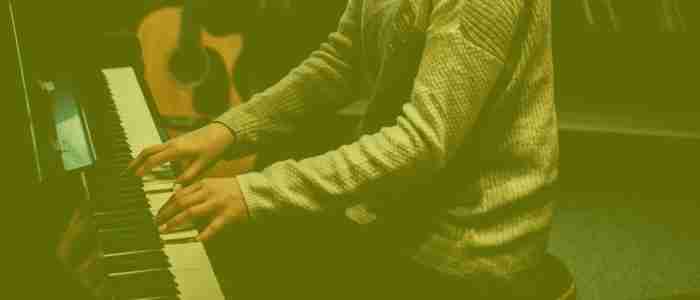
As you start to learn jazz improvisation, you should have a clear vision of what your goals are. It may not sound glamorous but your goals as you start out (assuming you want become proficient) should be to develop solid fundamentals through building the right practice habits.
These practice habits are:
- Listen to jazz every day. Enjoying it and feeling a true passion for the music.
- Learn and study tunes straight recordings rather than reading them from sheet music.
- Transcribe and learn language from recordings
- Understand how chords are built and why each chord “exists” in a tune, and how and why each chord progresses to to the next in a progression. Make sure to use your ear and learn to hear and recognize these chords aurally.
- long term goal – transcribe your first solo, with the aim of emulating language and concepts from the soloist and integrating them into your own playing
Top Lessons to develop strong practice habits for learning how to improvise jazz:
- 3 Steps to the perfect practice plan for playing jazz – How you practice jazz is everything. The daily habits you form accumulate to the musician you become. Learn the 3 steps to the perfect jazz practice plan.
- How to approach things one step at a time – There is a lot to practice as a jazz musician. Developing the mindset to tackle one thing at a time will help you get the most out of what you’re practicing, when you’re practicing it.
- How to never be overwhelmed again – Feeling overwhelmed is a real problem when practicing jazz. Use the tactics explained in this article to never feel overwhelmed when you practice jazz again.
- Learn Clark Terry’s 3 Steps to jazz improvisation – Trumpeter Clark Terry had a unique way of looking at how to play jazz. His 3 steps will help you conceptualize you’re learning process.
- Learn to be your own teacher – As you progress and become more advanced at playing jazz, you have to learn to become your own teacher. No longer can you depend on everyone else to spoon-feed you the information you need. You have to know what it is you need to work on and how to decipher the information out there for yourself.
Step 15: Stay motivated and constantly inspired
- Know what to do when you encounter inevitable frustration
- Learn tactics to connect with music on a deeper level
- Get excited, inspired, and motivated to improve
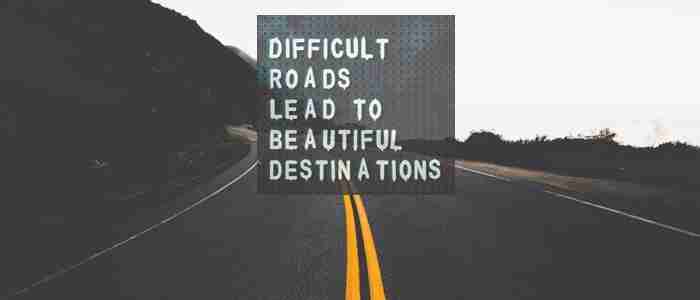
It may sound like a lot of work to start out this way, but I promise you, not only will you excel at lightning speed if you begin this way, but you’ll build the strong practice habits that will keep you improving and having fun playing your entire life.
Use this free jazz guide as a jumping off point to get started…of course not everything possible is covered here, but don’t let that be your excuse. Search for answers on Jazzadvice, ask your teachers, chat with your music friends, and most importantly, spend a massive amount of time listening to and studying recordings of your favorite jazz musicians.
You have the knowledge to get started in jazz improvisation. Skip the shortcuts and go straight to the source. Approach it like the masters did and you’ll learn how to improvise jazz like a pro.
Top Lessons to stay motivated and inspired on your jazz improvisation journey:
- How to turn frustration into progress when practicing jazz music – When working on becoming a better musician, it’s inevitable that you’ll be frustrated. It’s just the nature of the game. As a musician, learning to deal with this frustration in a positive way will give you a huge advantage.
- Why focusing on non-musical elements will help you – Besides the actual act of practicing your instrument, there are some key things that will make you a better musician including your mindset dan how you focus. Working on these aspects of being a musician will greatly help your playing.
- Words of wisdom from Harold Mabern, Jazz pianist legend – One of great teachers, jazz legend Harold Mabern, always has words of wisdom that will help any jazz musician up their game.
- Overcoming mental limitations in music – We’re limited by the limitations we set on ourselves. Becoming aware of these unconscious limitations will help you break free from them and excel to become the musician you desire.
- The Ultimate guide to overcome frustration in jazz improvisation – No matter who you are, everyone gets down about their own playing and their ability. Use this guide to overcome these unproductive mentalities.
- Reprogram your mind for optimal practice and performance – Playing and performing can be pretty frustrating. And even with the lessons we’ve shared on how to overcome your frustration, It can get really bad. Maybe you’ve just lost your spark for the music, or perhaps you feel like giving up or quitting music all together. The thing is: playing music should be fun. That’s why we put together a Jazzadvice Course that specifically addresses the negative issues common to all musicians. Things like competition, lack of confidence, stage fright, lack of motivation or focus in the practice room…And in 30 days, this powerful meditative audio course reprograms your mind and body so you can get back to doing what you want to do – create awesome music and have fun doing it.
Your ultimate guide for learning how to improvise jazz
In this ultimate jazz guide on learning how to improvise, we’ve covered a lot of material. Everything from the basics of jazz theory and scales and ear training, to the importance of learning jazz piano, transcribing, language and more!
Remember, learning how to play jazz and solo how you want to is a lifetime of work. When you see or hear a musician that is extraordinary, you may think to yourself, “How did they get so lucky?!?! How are they so good?!?!?”
But the reality is, when we someone like this, we’re often seeing the end result of years of hard work. And we see none of that. All we see is the beautiful playing that results from all that effort. They were a beginner at one point and they struggled too!
Stay positive and get excited about jazz and music, and how you’ll always have this incredible art form to keep you company, offering up yet another musical challenge to you each and every day.
Before we close, let’s do a quick recap of what we went over today:
- Listen to jazz like it’s your job – Every single day you should be surrounding yourself with the sounds of your favorite players and learning about musicians you were unaware of.
- Understand the culture of jazz – When you’re not listening to jazz, read about it! Immerse yourself in anything jazz. Go to shows any chance you get. Watch interviews. Surround yourself with jazz. Get obsessed!!!
- Understand what jazz actually is – There is a lot of misinformation when it comes to jazz. Make sure you dispel any myths that you might still believe in.
- Understand how to practice jazz– Knowing how to practice jazz is a big part of learning how to play jazz better. Learn what the pieces are, how they fit together, and put in the work.
- Learn jazz theory, but watch out! – Jazz theory can open a world to you but it can also hurt your musicianship if approached in the wrong way. Make sure you understand the pros and cons of music theory and how to use it to benefit your musicianship.
- Utilize the power of jazz visualization – Learning to visualize all the elements of music will speed up your learning by 10X. The mind can teach the body much more effectively than the body teaching the mind.
- Learn basic jazz piano – Very little skill is actually needed to learn the basic of jazz chord voicings and how to play jazz standards at the piano for non-pianists.. Get this fundamental skill and start having the advantage that so many people lack.
- Start jazz ear training – Training your ear is so much simpler than people think. Intervals, triads, seventh chords, chord tones, and progressions can be learned quickly with a little daily practice.
- Master common chord progressions – Two fives and other common jazz chord progressions are so frequent that learning how to approach them will take your playing over jazz standards to the next level.
- Get started with Blues & Rhythm Changes – These two jazz chord progressions are essential to the genre. If you learn them inside and out, you’ll be able to tackle most standards much more easily.
- Learn your first jazz standard – Building up a repertoire of jazz standards that you can confidently solo on is the whole point. You don’t need to know every tune. Instead choose a few, fall in love with them, and learn to solo with ease over them.
- Start transcribing and thinking about jazz language – Transcribing jazz solos and jazz language is a huge part of learning to improvise because it gives you a model for how to think and play. Start this process early in your development and reap the benefits.
- Acquire jazz language for common chords – Having jazz language for the common chords that you encounter over and over will help you never run out of things to play. Forming this fundamental layer of langue is crucial to understanding chords on a deeper level.
- Develop life long music practice habits – Learning how to improvise is a lifetime of work. If you develop solid practice habits from the get-go, you’ll set yourself up for success as a jazz musician.
- Stay motivated to become a better jazz musician – Harold Mabern always told us, “I can inspire you, but you gotta motivate yourself!” Use the many Jazz Advice lessons to inspire you, get motivated and become the musician you’;ve always dreamed of becoming!
Well there you have it! Your ultimate guide for learning how to improvise and excel at jazz improvisation for many many years. Remember, every single day is an opportunity to get a little bit better at playing jazz.
What you do daily adds up. Make every single day count!
And most importantly, have fun! Music is one of the most wonderful things we have in life, and we are lucky to be on the path of pursuing jazz improvisation. Enjoy yourself and continue to make progress.
Happy practicing!!!:)
